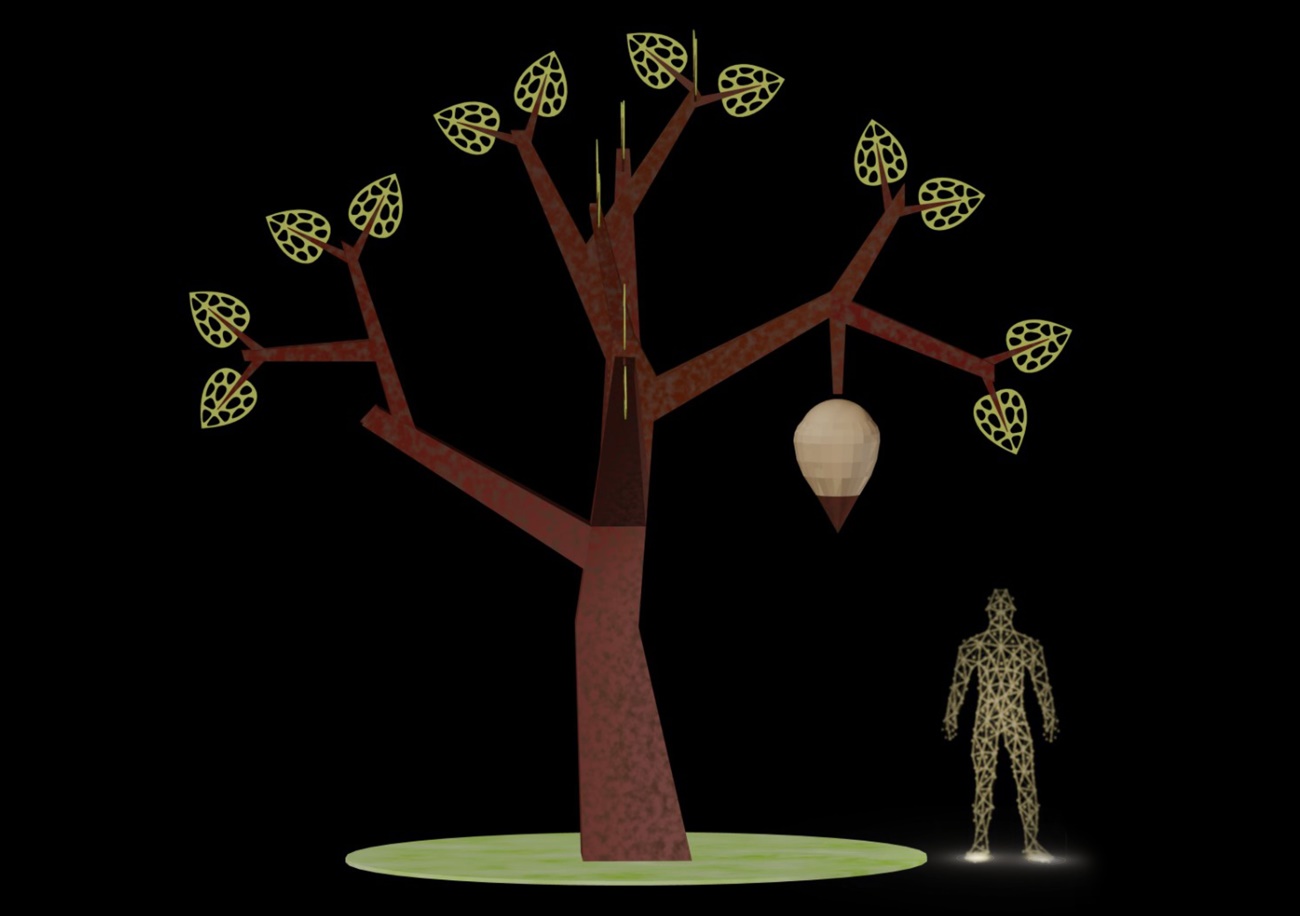[ 2021 ] 스테파노 데보티 (이탈리아) Stefano Devoti (Italy)
페이지 정보
본문
스테파노 데보티 (이탈리아)
Stefano Devoti (Italy)
<이상한 과일 Strange Fruit>

이 새로운 프로젝트는 이전의 ‘Let it Bee’ 프로젝트의 연장선에 있다. 미래에는 한 명의 사람(양봉인)이 10,000개의 벌통을 소유하는 것이 아니라, 10,000명의 사람이 한 통의 벌을 소유하게 될 것이라고 한다; (우리 인간의 생존과 긴밀하게 연결된) 벌의 생존은 인간 지식의 모든 분야에 적용될 수 있는 은유이다: 예술, 과학, 사회 연구는 다양한 분야의 통합을 지향한다.
이 프로젝트에서 나는 플라스틱에 의존했다. 플라스틱은 전체론적 원리가 전적으로 거부하는 자연의 공적 1호이며, 해결하기 어려운 문제이다. 재야생화 과정은 이 문제를 다루어야 한다. 과다소비/악마화라는 이분법을 극복해야 한다. (나는 완전히 재활용이 가능한 폴리카보네이트를 계획했다. 재활용 회사들은 폴리카보네이트를 70% 재활용할 수 있다. 향후 100%를 목표로 한다. 이것은 우리가 현 풍조를 바꿀 수 있다는 의미이다. 특히 소비자들의 재활용에 대한 의식을 바꿀 수 있다.) 철은 건축물에서 흔히 볼 수 있는 비자연적 물질이다. 지속가능성이라는 측면에서 자주 거론된다. 이것은 재활용 가능하며, 환경에 방치되더라도 오염을 발생시키지 않는다.
인간이 과도하게 꿀을 생산하면서 벌의 질병이 시작되었다: 자연에서는 꿀이 벌떼의 겨울 양식이다. 인간의 이익을 위해서 이 양식을 빼앗고, 벌에게 대용물을 주는 것이 벌의 생존을 해쳤다; 이 프로젝트 명칭과 똑같은 것이 ‘합법성으로 위장한 잔인성’에 대한 빌리 할러데이(Billy Holidays)의 노래 제목이다.
‘이상한 과일’ 프로젝트는 벌의 태도에 대한 몇 가지 단계들을 나타내려고 한다:
- 벌집 디자인은 벌-중심적이다. 나무 속 빈 구멍이 꿀벌의 가장 자연스러운 서식처이다. ‘이상한 과일’의 둥근 형태가 벌들이 건강하고 튼튼하게 자라게 만든다. 그리고 여왕은 벌집 모든 곳에 접근할 수 있다. (자연적 모계사회).
- 테라코타는 벌들이 집을 지을 때 사용하는 재료, 진흙을 닮았다. 테라코타는 꿀 생산 역사에서 결정적 시기인 고대 이집트와 그리스에서 인간이 벌을 키우면서 처음으로 사용한 재료이기도 하다. 우리는 그 시기를 벌과 새로운 공존을 회복하는 시점으로 바라볼 수 있다.
- 꿀을 채취하지 않는다. 벌은 자기 무리가 필요로 하는 행위와 자신들보다 더 강한 무리와의 경쟁 사이의 균형을 취할 수 있다.
‘Let It Bee’ 디자인에서와 마찬가지로 현대 디지털과의 결합을 위해 나의 주된 설치작품에는 low-poly 언어를 사용한다: 들뢰즈와 가타리(Deleuze and Guattari)에서 기인한 몇몇 연구들은 웹에서 익명이나 위장해서 이루어지는 자기-언급(self-referentiality)과 폭력의 점증하는 역학이 다른 사람들과 관계를 맺는 능력을 잃게 만드는 것에 주목했다. 물간(Geoff Mulgan), 『메뚜기와 벌, 자본주의의 미래에서 육식동물과 창조자』, 한병철, 『벌떼 속에서, 디지털 전망』 같은 저자들은 벌떼 모델을 우리 사회의 여러개의 가치들이 가진 문제에 대한 대용, 혹은 영감을 얻기 위해서 사용한다.
‘이상한 과일’은 다른 “정상적” 나무들 가운데 있는 철로 된 나무 위에 있다. 이 나무는 아마도 수많은 악조건 속에서도 새로운 생명체들을 만들 수 있는 지하의 뿌리줄기의 망(rhizomatic net)에서 탄생한 것 같다.
This new proposal extends the previous Let it Bee project invigorated by the new curatorial guidelines. It is said that the future of bees is not in one beekeeper with 10,000 hives, but with 10,000 people keeping one hive each; the bees paradigm and their survival (strictly weaved with our) offer ultimately a perfect metaphore applicable to all the fields of human knowledge: art, science and social investigation can find a perfect mirror beyond blocked contraddictions, toward a synthesis of the multiplicities.
In this direction I resorted to plastic too in this project. Plastic, the nature's enemy number one, fully rejected by the common holystic doctrines, is a problem that cannot be solved looking elsewhere: the same process of rewilding has to face realistically this issue overcoming the dichotomy overconsumption/demonization(I planned polycarbonate, fully recyclable. The leading recycling companies can work with an average of the 70% recycled PC on new productions looking for the 100%. This means that it already possible to reverse the trend, especially increasing the awareness of the consumers). The iron, that can appear as non-natural material, has in building and architecture the primacy in sustainability. It is durable, completely recyclable and even if abandoned in the environment it doesn’t create any pollution.
The bees deseases started when humans forced the intensive honey production: in nature the honey represents the winter food for the bees community. The exploitation of this reserve for market porpouses and the nourishment of bees with surrogates, harmed their very existence; the same project title come from the Billy Holidays song that is about cruelty cloaked in legitimacy.
Strange fruit project wants to represent some steps back toward the wild attitudes of the bees:
-The beehive design is bee-centred, a natural tree cavity is the most natural nest site of Honeybees. The rounded shape of the Strange Fruit promotes a healthy and strong bee colony where the queen has access to all areas of the beehive (unconditioned natural matriarchy).
-The terracotta recals the same material that wild bees use for their combs, just mixed clay. Terracotta wants also to remind the first steps in human beekeeping in ancient Egypt and Greece traditions, a crucial time in the intensive honey production history. We can look at that moment as restoring point of a new coexistence with pollinators.
-No honey harvesting, the bees can balance their activities just for the community needs and naturally swarm in new other wild stronger communities.
As in the Let It Bee design I’m using a low-poly language for the main installation to link the contemporary digital dimension: several studies, derived also from Deleuze and Guattari, are focused on the growing dynamics of self-referentiality and violence on the web, often anonymous and disguised, which lead to the loss of the capability to relate to others. Authors like Geoff Mulgan(The Locust and the Bee, Predators and Creators in Capitalism's Future) and Byung-Chul Han(In the Swarm, Digital Prospects) are directly using the bees community models as counterpart or inspiration to describe the agony of the values in our society.
The Strange fruit lies on an iron tree among other “normal” trees, a tree maybe born from an equally strange underground rhizomatic net able to generate new creatures even in a multiplicity of unfavourable conditions.
- 이전글수프리야 파바 (인도) Supriya Pava (India) 21.08.30
- 다음글SPACE Start Collective_카타지나 고딘-스코칠라스, 마우고자타 카치마르스카 (폴란드) dŻiNn_마치에이 스워타 (폴란드) SPACE Start Collective_Katarzyna Godyń-Skoczylas, Małgorzata Kaczmarska (Poland) dŻiNn_Maciej Słota (P 21.08.30
댓글목록
등록된 댓글이 없습니다.


